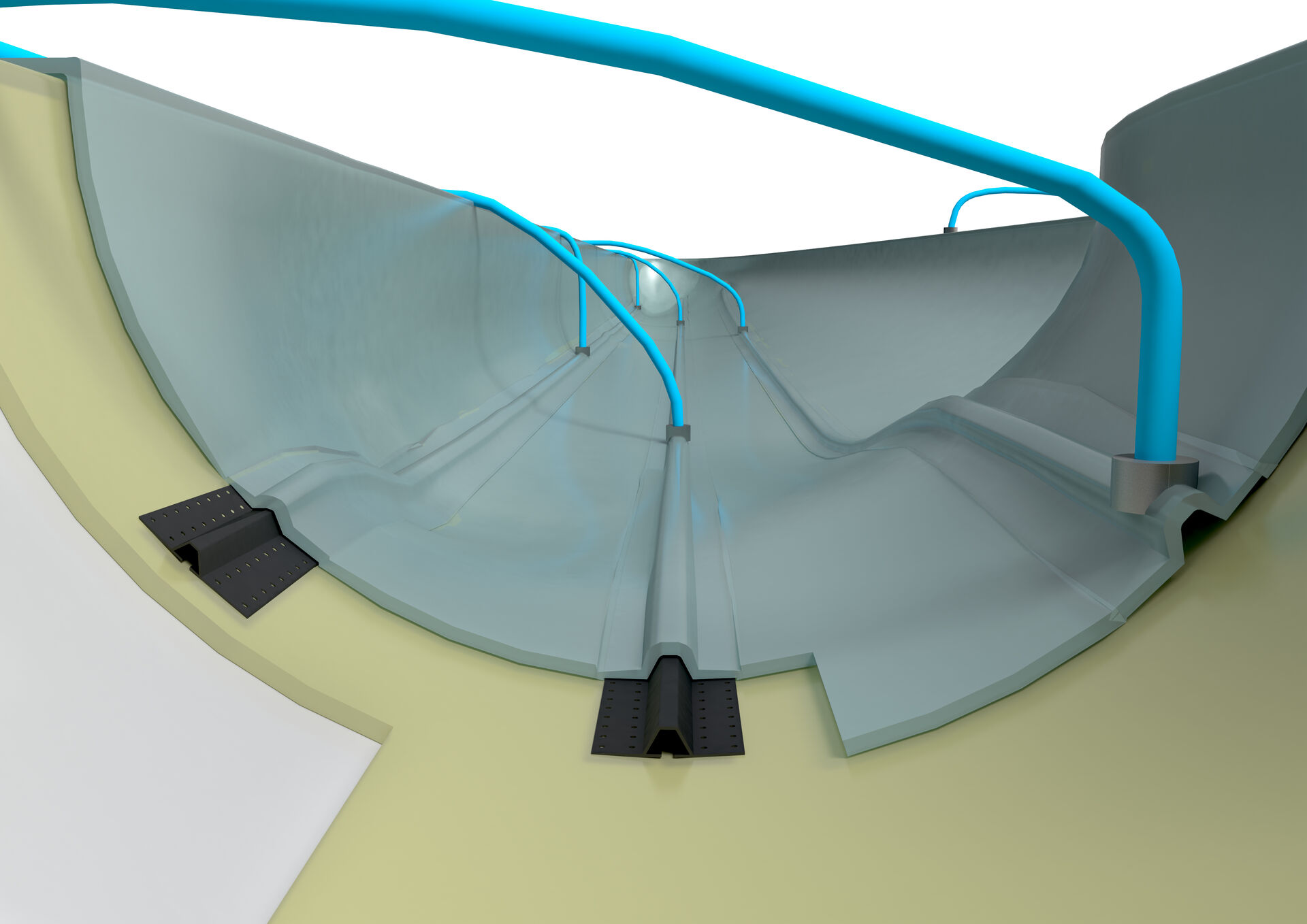SHARING KNOWLEDGE IS FUN
In our JÄGER Wiki we have summarized some basic terms of rubber and plastics processing. In addition to a selection of different materials, you will also find a short description of recognised manufacturing and testing methods.
The demand for an oil, grease and fuel resistant rubber led to the development of acrylonitrile butadiene rubber, colloquially known as nitrile rubber (NBR), in the 1930s. Due to the proportion of acrylonitrile units along the polymer chain, NBR has good to excellent resistance to mineral oils, fuels and solvents. At the same time, reinforced NBR vulcanizates show good mechanical properties.
Products made of NBR are always interesting when good resistance to oils, greases and fuels is required. This can be in the food sector, but also in technical areas or the automotive industry. The products range from hoses, O‑rings, balls and flat seals to complex molded parts.
Butadiene rubber was developed in the 1920s through the polymerization of butadiene. As a so-called all-purpose rubber, BR is still one of the most frequently used rubber types in terms of volume. BR is characterized in particular by excellent elasticity, especially at very low temperatures. This results in excellent abrasion resistance and low dynamic heating. The aging and oil resistance of BR is comparatively poor.
Butadiene rubber is mainly used in the tire industry as a blending component. The addition to natural rubber or styrene-butadiene rubber makes it possible to significantly improve the abrasion and rolling resistance of a tread compound. In technical rubber goods BR is used to improve the elasticity of other rubbers in conveyor belts, shoe soles, roller covers or bearing elements. Pure BR compounds are generally not used due to their difficult processability.
The addition of a small proportion of isoprene in the production of polybutylene led to the development of butyl rubber in the mid-20th century. The particularly low gas permeability combined with very good resistance to polar chemicals, especially at elevated temperatures, distinguishes IIR from many other rubbers. IIR also exhibits extremely low elasticity over a very wide temperature range, which is equivalent to a high damping effect. The resistance to ozone and oxygen as well as (UV) light is particularly good with IIR.
A large part of the IIR rubber production is used in tire construction. As a so-called innerliner, the particularly low gas permeability is used to produce a tubeless tire. IIR is also used for bicycle tubes. The high damping capacity allows the use as a buffer spring or damper. IIR is also used to manufacture heat-resistant products such as bellows or boiler seals and for seals in contact with polar solvents. A further field of application is the production of chewing gum masses.
Acrylatkautschuke (ACM) weisen eine hohe Beständigkeit gegen Mineralöle und erhöhte Temperaturen auf. Dabei sind auch schwefelbasierte Additive moderner Schmierstoffe für ACM-Typen kein Problem. Um die Elastizität und die Beständigkeit gegenüber Wasser, Säuren und Laugen zu verbessern, werden Copolymerisate aus Acrylat und Ethylen (AEM) verwendet. Die hohe Heißluft- und Heißölbeständigkeit macht ACM besonders für den Automobil- und Motorenbereich interessant. ACM wird vornehmlich zu Schläuchen, Dichtungen und Membranen verarbeitet. AEM-Typen werden weiterhin für Kühlwasserschläuche, Luftansaugschläuche, Kabelummantelung und in speziellen Formulierungen als flammwidrige Produkte ohne Halogenanteil verarbeitet. Die mechanischen Eigenschaften von ACM und AEM sind eher mäßig.
The term elastomers covers wide-meshed cross-linked polymers which are characterised by high elasticity and thus good recovery after mechanical stress. Elastomers, colloquially known as rubber, are produced from rubbers by cross-linking reactions with sulphur (vulcanisation), peroxides or similar chemicals.
The various elastomers or the underlying rubbers are classified into general-purpose rubbers, special-purpose rubbers and high-performance rubbers.
Injection molding (IM) describes a discontinuous process for the production of rubber moldings. In this process, the raw compound is first fed into a screw unit and plasticized, possibly homogenized and preheated by active heating elements and mechanically by the shear forces acting on it. A piston then presses the mixture via a distribution system into the cavities or cavities of the mold. Here, vulcanization takes place in a similar way to the TM or CM process, whereby preheating the compound significantly reduces the heating times. Injection molding is suitable for high quantities or high tolerance requirements. The tool costs are significantly higher compared to the CM process.

Arnold Jäger Holding GmbH
Lohweg 1
30559 Hannover (Germany)
Tel. +49 511 – 53580
Fax +49 511 – 553394
Management board:
Dipl.-Kfm. Marius Jäger
Dipl.-Ing Sebastian Jäger
Registercourt Hannover HRB 59983
DE 813 341 233
Arnold Jäger Holding GmbH
Artemis Kautschuk- und Kunststoff-Technik GmbH
Artemis PC Pump Systems Ltd.
Transportbandenfabriek EA Broekema B.V.
Broekema Beltway USA, Inc.
Jaeger Envirotech India Private Limited
Jäger Gummi und Kunststoff GmbH
Jaeger Maritime Solutions GmbH
Jaeger Polska Sp. z o.o.
Jaeger Rubber & Plastics (Shenzhen) Ltd.
Jäger Umwelt-Technik GmbH
Jaeger-Unitek Sealing Solutions, Inc.
Spira Systems, Ltd.
Windgassen GmbH